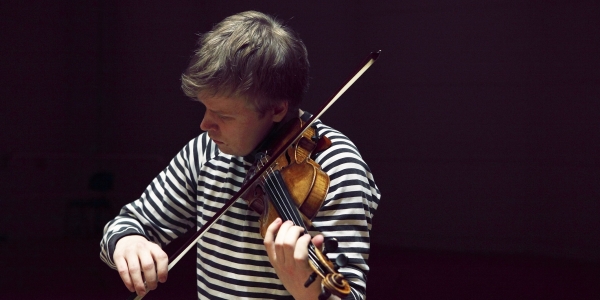Their show, Three Finnish Sets sets out with classical Beethoven, moves into an improvisation appropriately named Great Mistakes and onto tango for the third set.
Accomplished musicians in their own right, Kuusisto and Rantala have worked together off and on over many years. “We are relatives actually, I am married to Pukka’s sister, so we go a long way back,” says Rantala. “His family is [musical], mine is not. My father and mother had a bicycle shop and we have absolutely no musicians and no artists in the family. Pekka’s family has only musicians in it.”
Kuusisto began playing music early. “I started when I was three. That’s not actually such an uncommon time for violinists to start. I was quite little but my parents, especially my father, are very well versed in all sorts of music so we were listening to and playing lots of things from very early on.” Despite not being musical themselves, Rantala’s parents were keen to get him involved in music from an early age. “My mother dragged me to classical boys’ choir auditions when I was six years old and I got in. That is a boys’ choir that is working on a professional level with international tourings. I got into music very deeply at the age of six, singing Bach and Mozart and touring around Europe. We sang for Ronald Reagan when I was nine. I can’t remember that clearly, except the house was white and we were really excited. After being in a choir for five years I started playing piano and got into jazz and pop and just I thought that that was much more fun and there was much more freedom for me, so that’s what I’m doing, but then I’m still doing classical stuff, so I’m kind of doing both but my main work is jazz.”
Kuusisto and Rantala will be working with ANAM students towards a performance on Friday. “I don’t think we will write anything down, I think the topic of the week will be improvisation so it’s not a good thing to start taking the manuscript paper and writing down a bunch of things. We teach them by ear and by heart,” says Rantala.
Of the work with ANAM, Kuusisto says, “It’s a privilege to return to a place where people are feeding the fire, rather than worshipping ashes.” On considering the comment, he says, “Actually that is a quote from the composer Gustav Mahler, but I think it’s mostly about accepting in music and in general that things should be in a constant state of change. The moment you think, ‘This is right, this is how we should keep it,’ – that is the moment when you put the whole thing into a museum, and in this case a museum is not where you want to be. I think it should be a living, breathing art form and there is no crystal ball that will tell you where it’s going to develop, but it is all musicians’ responsibility to feed the fire, to add things into the great big bowl of music instead of taking them away.”
Students improvising a performance with two virtuosos sounds both exhilarating and terrifying. Kuusisto says there’s a range of improvisational skill in classically trained musicians: “It depends completely on the personality. Some people are complete naturals. I think some people are not so eager to try it. I don’t think everyone can become a great improviser.”
Rantala says the performance is accessible – in case you were worried. “I think tangos are something that it’s easy for people to get into. They are quite romantic, even if you’re not a music fan. It’s easy to understand what we’re doing and we improvise a lot so it’s a fun thing to listen to. The music changes almost all the time but we keep our feet on the ground.”







